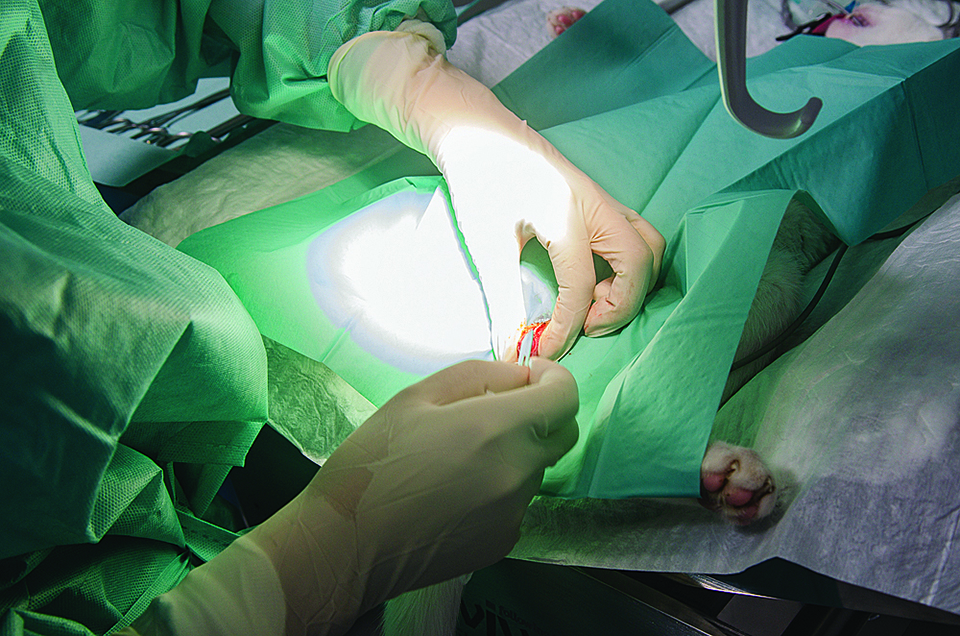REPRODUCTIVE DISEASES PREVENTED BY ELECTIVE NEUTERING
You have probably heard about the many general benefits of elective neutering. It’s time to dive a bit deeper and talk about how much more your fur-babies could benefit from it, especially in terms of their reproductive health.
NEUTERING VS. SPAYING
Neutering is a sex-neutral term pertaining to the process of removing the reproductive capacity of an animal. It is a general term that can be used for either male or female animals. Spaying is the more specific term for the removal of the reproductive capacity by removing the ovaries and/or the uterus of a female animal.
In Filipino, we often hear pagpapatali or pagpapa-ligate, which is often used in reference to spaying. Castration, or pagpapakapon, is the process of removing the testicles of the male animal in order to neuter them.
SURGICAL VS. NON-SURGICAL MEANS
While the most common way of sterilization is surgical, there are other non-surgical procedures, such as the injection of chemical or hormonal sterilants.
However, spaying eliminates the occurrence of ovarian cysts and neoplasia. It can also decrease the risk of your fur-babies acquiring cystic endometrial hyperplasia, pyometra, uterine neoplasia, vaginal prolapse, and mammary cancer.
Castration, on the other hand, eliminates the risk of male animals getting testicular diseases. They would also be less likely to have prostate inflammation or benign prostatic hyperplasia. Let’s discuss the few illnesses that can be prevented with neutering your fur baby:
ELECTIVE?
Surgeries can be classified as either elective or non-elective. Non-elective surgeries are procedures advised by your veterinarian to be done as soon possible. For instance, maybe a cat is in a life-threatening condition, such as pyometra, and requires surgery.
Elective surgeries are those that are usually requested by the pet parents. It doesn’t necessarily mean that it is optional; it just means that the procedure can be scheduled ahead of time instead of being an emergency. Neutering is considered as an elective surgery.

WHAT DISEASES DOES SPAYING PREVENT?
HERE ARE JUST A FEW CONDITIONS PREVENTED BY NEUTERING AND SPAYING.
- OVARIAN CYSTS
Ovarian cysts are fluid-filled structures that can originate either within or from around the ovaries. This condition may develop after prolonged exposure to estrogen. The presence of these cysts may lead to hyperestrogenism or the condition of having excess estrogen in a cat or dog’s body. If not managed, this condition may lead to an abnormal estrous cycle, enlarged vulva and nipples, and hair loss. - OVARIAN GROWTHS
Ovarian neoplasia is due to uncontrolled disordered growth of cells within the ovaries. It can be attributed to a lot of various causes. Like ovarian cysts, this condition may lead to hyperestrogenism. Often times, pet parents do not notice early signs of ovarian neoplasia as they may only be evident when the tumor has already grown to a considerable size. A cat or dog may experience vulvar enlargement, vaginal discharge, an abnormal estrous cycle, pyometra, weakness, lack of appetite, weight loss, hair thinning, or difficulty in breathing. - UTERINE GROWTHS
Uterine neoplasia is quite similar to ovarian neoplasia. The difference is that the tumor grows in the uterus. - CYSTIC ENDOMETRIAL HYPERPLASIA
This condition is due to the abnormal response of the animal’s uterus to ovarian hormones. Due to hormonal stimulation, the endometrium would either increase in size or have more glands. These changes lead to hypersecretion and, eventually, the accumulation of secretions within the uterus. Secretions may vary from watery to mucoid, and could even be bloody. There are different signs a pet parent could observe, including vaginal discharge, abdominal enlargement or distention, fever, and lethargy. - PYOMETRA
One of the most common disorders of the uterus in middle to older dogs is pyometra. It is the accumulation of pus in the uterus. Pyometra is a hormonally mediated disease, where bacterial infection eventually takes place. Without proper medical attention, pyometra is life-threatening.
Pyometra is either open-cervix or closed-cervix, depending on the presence or absence of vulvar discharge, which is just one of the many signs you may notice. - VAGINAL PROLAPSE
Vaginal prolapse is the protrusion of swollen vaginal tissue through the vulva. This condition is more common in large breed dogs who are not spayed. - MAMMARY GLAND TUMORS
A pet parent often visits the veterinary clinic after feeling a lump in their fur-baby’s mammary gland, and the vet may suspect mammary gland tumor. This condition is the most common tumor in non-neutered female dogs and the third most common in cats. It is reported that spaying reduces the risk of cats from developing mammary tumor by 91%. - BENIGN PROSTATIC HYPERPLASIA
This is the most common prostatic disorder in male dogs. This is a non-cancerous enlargement of the prostate gland that results from altered sex hormone stimulation. Aside from the enlargement, difficulty in urinating and defecating are often observed in animals with this condition. - BACTERIAL PROSTATITIS
Bacterial prostatitis usually occurs in mature, non-neutered, or recently neutered animals. This condition is a result of an ascending infection, which leads to bacterial proliferation in the hyperplastic prostate gland. Castration may lower the risk of fur-babies from having this condition. - TESTICULAR DISEASES
The risk of an animal developing testicular diseases – such as orchitis or the inflammation of the testicles, and epididymitis or the inflammation of the epididymis – is eliminated once they are castrated.
NEUTERING CAN SAVE YOUR FUR-BABY’S LIFE
With many alarming and possibly life-threatening illnesses that affect our fur-babies’ reproductive organs, we surely would want a way to prevent them. Having them neutered will surely go a long way, as it does not only address the overpopulation of dogs and cats, but also protects our own animal companions’ reproductive health as they age.






